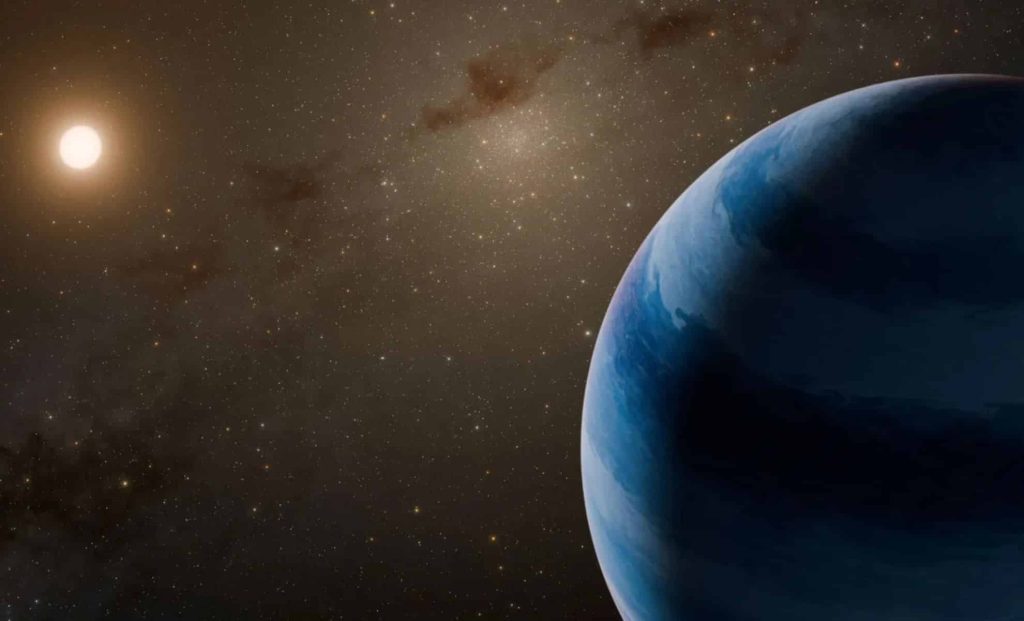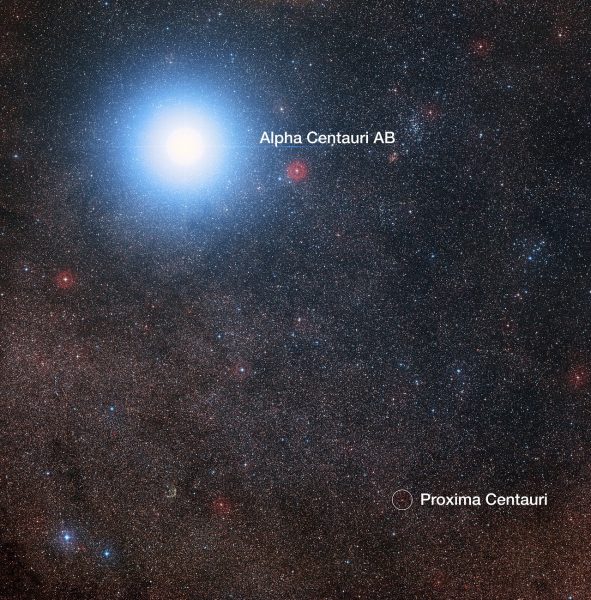NASA Discovers a Lightning-Speed Exoplanet System That Could Shatter Galactic Records – The Daily Galaxy –Great Discoveries Channel

NASA scientists have made a groundbreaking discovery that could change how we understand the dynamics of exoplanetary systems. The system, consisting of a faint star and a planet, is believed to be moving at an astounding speed of 1.2 million miles per hour (540 kilometers per second)—nearly double the speed of our solar system as it orbits the Milky Way. If this speed is confirmed, it would make this system the fastest exoplanet system ever discovered, an achievement that could reshape our understanding of stellar motion and planetary formation. The discovery also provides insight into how planetary systems evolve in regions of the Milky Way’s densely packed galactic bulge.This stellar duo was initially detected using microlensing, a technique that relies on the warping of light caused by gravitational forces, which allows astronomers to spot distant stars and planets that might otherwise be invisible. While the system was first identified in 2011, recent follow-up observations, including data from Keck Observatory and ESA’s Gaia satellite, have provided crucial insights into the speed and nature of this pair of celestial bodies.The pair of objects are believed to consist of a super-Neptune world, a type of planet significantly larger than Neptune, orbiting a low-mass star. This planet’s orbit is speculated to lie between the orbits of Venus and Earth if it were in our solar system, making it an intriguing candidate for study. However, due to the faint nature of the star, this planet falls well outside the star’s habitable zone, meaning it is too far from the star to support life as we know it.“We think this is a so-called super-Neptune world orbiting a low-mass star at a distance that would lie between the orbits of Venus and Earth if it were in our solar system,” said Sean Terry, a postdoctoral researcher at the University of Maryland and NASA’s Goddard Space Flight Center. “Since the star is so feeble, that’s well outside its habitable zone. If so, it will be the first planet ever found orbiting a hypervelocity star.” This discovery adds a new dimension to our understanding of exoplanets, particularly those associated with stars moving at extraordinary speeds.The velocity of the star-planet system suggests that it might be on a trajectory that could eventually lead it to escape the gravitational pull of the Milky Way. If this is the case, it would mean the system is destined for intergalactic space. The concept of a hypervelocity star, a star that moves faster than the escape velocity of the galaxy, is not entirely new, but to discover one with an accompanying planet is a rare and significant find.Determining the precise nature of this system is a complex task. One of the key challenges scientists face is calculating the exact mass of the star and its planet. While researchers can easily determine the mass ratio between the two objects, measuring their actual masses depends on how far they are from Earth. This measurement is similar to how magnification changes when you adjust the distance of a magnifying glass over an object.“Determining the mass ratio is easy,” said David Bennett, a senior research scientist at the University of Maryland and NASA Goddard. “It’s much more difficult to calculate their actual masses.” This is a critical challenge, as understanding the masses of both the star and the planet will provide more insights into their relationship and the nature of their high-speed motion. Such information is crucial for understanding the mechanics of how the system behaves and whether it will continue to travel at such high speeds.Scientists are also keen on confirming whether the star currently identified is indeed part of the same system that was detected in 2011, using microlensing to spot the pair. Given the star’s extraordinary speed, researchers are working to confirm whether it is moving in the right direction and at the right velocity to align with the 2011 observation.“To be certain the newly identified star is part of the system that caused the 2011 signal, we’d like to look again in another year and see if it moves the right amount and in the right direction to confirm it came from the point where we detected the signal,” said Bennett. This additional round of observations will help to confirm whether the current star is truly part of the same system, or if the object observed in 2011 was a rogue planet or exomoon.The future of this discovery depends on a combination of continued observation and technological advancements. As astronomers gather more data, they will be able to confirm whether the system is indeed part of a hypervelocity star-planet pair or if the alternative explanation—a rogue planet with a potential exomoon—better fits the observations.“If high-resolution observations show that the star just stays in the same position, then we can tell for sure that it is not part of the system that caused the signal,” said Aparna Bhattacharya, a research scientist at the University of Maryland and NASA Goddard. “That would mean the rogue planet and exomoon model is favored.” Such insights would mark a significant step forward in the understanding of planetary systems within the dense environment of the Milky Way’s galactic bulge.The upcoming Nancy Grace Roman Space Telescope, which is slated to launch in the coming years, could play a pivotal role in unraveling the mysteries of fast-moving exoplanet systems. Its ability to survey the galactic bulge with high resolution will allow scientists to study more of these high-speed systems and understand how they form and evolve in the extreme conditions of the galactic center.“In this case, we used MOA for its broad field of view and then followed up with Keck and Gaia for their sharper resolution,” said Terry. “But thanks to Roman’s powerful view and planned survey strategy, we won’t need to rely on additional telescopes. Roman will do it all.” This development opens the door for a new era of high-resolution observations that may reveal even more about the dynamics of exoplanet systems in our galaxy.This article has been republished from the following materials. Note: material may have been edited for length and content. For further information, please contact the cited source.Got a reaction? Share your thoughts in the commentsEnjoyed this article? Subscribe to our free newsletter for engaging stories, exclusive content, and the latest news.Comment Save my name, email, and website in this browser for the next time I comment.
© 2024 | Daily Galaxy | All rights reserved
Source: https://dailygalaxy.com/2025/02/nasa-lightning-speed-exoplanet-system/






